In the Fall of 1995, Vince McMahon's WWE, then known as the World Wrestling Federation (WWF), was at a crossroads. Between McMahon's criminal trial (and eventual acquittal) for alleged steroid distribution, mass talent defection to rival promotion WCW, falling TV ratings and both creative and financial woes ongoing, the company was at a low point and something had to happen to get things back on track.
Fortunately, there was a strong card for that year's Survivor Series and the main event happened to be a No Disqualification Match between the company's two top stars, Bret 'The Hitman' Hart and Kevin Nash under his then ringname, 'Big Daddy Cool' Diesel. While the undercard for the pay-per-view (particularly the multi-man wild card elimination match) was solid-to-good, it was the high-quality showdown between Nash and Hart, with Hart winning and becoming 3x WWF champion, that stole the show.
For context, this was the same era where people like Doink The Clown and Duke 'The Dumpster' Droese (a wrestling sanitation worker) existed. Throwaway gimmicks were the norm, in-ring athleticism was minimal, and the overall product was overwhelmingly stale.
In retrospect, it's arguable that Hart and Diesel's match was the light at the end of a dark tunnel.
While the Montreal Screwjob will always go down as the company's most controversial Survivor Series moment, and the various multi-man elimination matches might always be the most memorable, Diesel vs. Bret Hart was technically a quiet watershed moment that subtly and permanently changed the course of the entire business.
These are five (count 'em five!) reasons why Diesel vs. Bret Hart is the most important Survivor Series match ever.
#5 It was the first time the Spanish announce table was weaponized in WWE
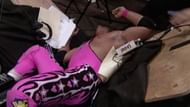
There was a popular joke going around on social media that the Spanish announce table must be inducted into the WWE Hall of Fame. Hardcore wrestling fans would welcome such a move owing to the innumerable moments the table has given the world of professional wrestling.
For nearly 25 years, the Spanish announce table has been a mainstay prop in the WWE's presentation of brutal simulated combat. Dozens of pay-per-view matches have featured this piece of furniture being smashed and demolished with various Superstars atop of it. This has happened for so many years that it's hard to imagine a time when there were no tables broken at all.
While use of tables had been common in other promotions around the world, WWE's very first use of the spot happened with Diesel/Hart. Nash, recovering inside the ring after dodging a slingshot plancha from Hart, stood by waiting as the Hitman gradually climbed the apron to get back inside, then suddenly charged at Hart, shoving him off the apron directly into the table.
In the WWE of 1995, this was a shocking moment. Young fans in attendance just outside Washington, DC ran to the front row to see Hart laying on the table as if something 'real' had just happened that broke up the monotony of scripted wrestling maneuvers.
After a quarter century and hundreds of uses, this violent use of lumber is not as shocking as it was in 1995, but it always elicits a reaction from the crowd. Diesel and Hart's match deserves credit for executing the spot so perfectly that it began a trend that's ongoing to this day.
#4 It ended the 'big man' era
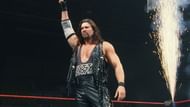
In the 1980s and early 90s, WWE's chairman Vince McMahon was steadfast in his vision of wrest..err, sports entertainment...should be the land of larger-than-life characters, therefore it should come as no surprise that McMahon overwhelmingly favored physically tall, muscle-bound superstars regardless of their technical pro-wrestling skill (or lack thereof).
Hulk Hogan, Andre The Giant, The Ultimate Warrior, The Undertaker, Yokozuna and most other legends of the old days made the WWF look like a place where mostly the biggest, strongest athletes dominated.
With Diesel having held the WWF title for all of 1995 before Survivor Series, this era was swiftly about to come to a close.
The year of Nash's run happened to be one of the worst financial years in the company's history, and by the time of the fall, classic pay-per-view, it was clear that he had been the worst drawing champion of all time. That, coupled with McMahon's legal issues over alleged steroid distribution, led the company to pivot toward pushing smaller superstars like Hart and Shawn Michaels, who main evented the next Wrestle Mania.
By the time Diesel left WWF in the Spring of 1996, it was clear that the era of big men dominating the entire main event scene was over, and in the years since, the upper portion of the roster has been become much more diverse in size.
The departure of Nash and Scott Hall began the Monday Night wars and the WWE's main event contingent consisted of Triple H, Stone Cold and The Rock, all of whom were athletically good but medium in stature.
#3 It cemented Bret Hart as one the greatest ever
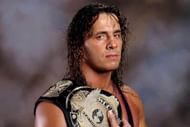
Bret Hart, the 2x WWE Hall of Famer and multi-time champion, had already won the WWF title twice as well as the Royal Rumble match and King of the Ring tournament by the time of Survivor Series '95, but it was his third taste of gold that solidified him at the very top of the pecking order.
The Diesel match put him in rare company of 3x WWF champions (very rare accolade at the time), it proved he could still carry the company at an advanced age of 38, and it completed the storyline narratives of him gaining back the championship he had lost in controversial fashion to Bob Backlund exactly one year earlier, and defeating his nemesis Diesel whom he had two previous matches with that ended without a definitive winner.
Hart vs. Diesel at King of The Ring '94 ended with Jim Neidhart interfering, costing Hart the match by disqualification. The 1995 Royal Rumble saw Hart and Diesel face off in another match for Diesel's title that had been newly won from Backlund, but it ended as a no contest due to interference by Shawn Michaels, Jeff Jarrett and Owen Hart.
Without the definitive win over Diesel at Survivor Series, the in-storyline question of whether Bret truly was the best there is, was, and best there ever will be could not have been answered. Thanks to the small package roll-up that quickly closed the match, he proved his nickname to be true.
#2 It sparked a trend toward more "extreme" wrestling
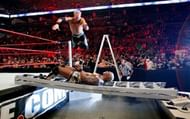
The WWE of the 1980s and early 90s bared little resemblance to the Attitude and Ruthless Aggression eras that would come to define the company for the next generation of fans. In fact, 1995's RAW and pay-per-view events rarely featured anything even close to the high-flying, furniture-heavy stunts that would become normalized in subsequent years.
Vince McMahon, content with promoting a family-friendly, mainstream product, eschewed the dangerous bumps popularized in Memphis, other territories, and Japan. Instead, he focused on larger-than-life, wacky characters and mostly traditional storytelling to drive fan interest.
With Big Daddy Cool and the Hitman (as well as Paul Heyman's ECW promotion) proving foreign objects and table bumps could be safely used to elevate the product to another level, the WWF of 1996-1997 gradually began to allow more extreme manuevers as part of various major feuds (Undertaker vs. Mankind, Triple H vs. Mankind, Stone Cold vs. Bret Hart, and so on).
Even just a month after Survivor Series '95, Hart would "draw color" by bleeding from the forehead in his match with the British Bulldog at In Your House: Seasons Beatings, something that was even more rare at the time than weapons.
Today, WWE is practically reliant on these over-the-top human demolition scenes, but a retrospective view of pay-per-view main events on the WWE Network reveals that this came about as a gradual progression, and it all started with Diesel/Hart.
#1 It began a creative and financial return to form for WWE
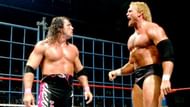
In mid-90s, the WWF was in a freefall from the booming Rock-N-Wrestling era of the 1980s, and by 1995, the ratings, fan interest and product quality were at an all-time low.
With abysmal booking (i.e. pointless jobbers taking up precious airtime in the single hour of Monday Night RAW), consistently disappointing pay-per-views, major stars like Sycho Sid and Mabel failing to get over and Wrestle Mania XI (main evented by a non-wrestler in NFL player Lawrence Taylor) being the lowest selling and attended 'Mania ever, things were going very poorly for the sports entertainment brand.
But then Survivor Series happened. Goldust was just getting started and was highly entertaining. The women's 5 on 5 match, featuring Alundra Blayze and several top female stars from Japan, was a solid outing. The 5 on 5 Wildcard Match, featuring heels and faces mixed together on the same team, was a clever idea that worked well, especially with Shawn Michaels and a debuting Ahmed Johnson picking up the win.
And then there was Diesel/Hart, who brutalized each other for nearly 25 minutes and stole the show. This single night proved that despite the negatives, there were good times yet to come and things were about to change.
Despite the stiff competition from WCW, the WWF's fortunes seemed to turn around in the aftermath. Pay-per-views, as well as RAW, steadily improved in the following year, and the entertainment value of the company dramatically shot up until the Attitude Era was well under way three years later the WWF once again managed to penetrate pop culture. In retrospect, Diesel/Hart can be seen as a harbinger of good fortune that was surely to come to WWE and professional wrestling.
Even though Bret Hart and Kevin Nash both moved to the WCW, they were unable to replicate the success of their bout in the WWE.
Big name returning at Evolution? More details HERE

